As a BetterHelp affiliate, we receive compensation from BetterHelp if you purchase products or services through the links provided
Grief is a natural and overwhelming emotion many experience after losing a loved one. It can be challenging to navigate and process this intense feeling, which can lead to a sense of isolation and helplessness. One approach that has been gaining recognition for its healing effects on grief is art therapy. This form of therapy offers a unique way to express, understand, and cope with the pain of loss through various creative mediums.
Art therapy for grief is grounded in the belief that the creative process can be a powerful tool for self-discovery, emotional expression, and healing. By providing individuals with a safe and non-judgmental space to express their feelings, art therapy encourages the exploration of emotions that may be too difficult to put into words. Different art techniques can be employed, like painting, drawing, collages, sculpture, and more, allowing the grieving person to find the most comfortable and suitable way of addressing their grief productively.
Key Takeaways
- Art therapy provides an alternative way to process and cope with grief through creative expression.
- Diverse art techniques allow individuals to explore their emotions and find the most effective way to address their grief.
- Incorporating art therapy into daily life can promote healing and offer support during various stages of the grieving process.

Understanding Grief
Grief is a natural response to loss. It’s a complex mixture of emotions, such as sadness, pain, fear, anger, and relief. When you’re grieving, it can feel like an emotional rollercoaster with ups and downs.
Grief can be triggered by various types of loss, such as the death of a loved one, a breakup, job loss, or any significant life change. The intensity and duration of your grief may vary depending on the nature of the loss, your relationship with the deceased or what you’ve lost, and your personality and coping skills.
Everyone’s grieving process is unique. But there are some common grief responses you might experience, such as:
- Shock and disbelief, where you may have trouble accepting the loss
- Intense sadness or despair as you begin to feel the weight of your loss
- Anger and frustration, which can be directed at yourself, others, or the situation that led to the loss
- Fear and anxiety, as you face an uncertain future without the person or thing you’ve lost
Grief therapy can help you process your emotions and learn coping strategies for your loss. It’s essential to allow yourself time to grieve and seek support from friends, family, or a professional therapist.
When grief becomes overwhelming or long-lasting, it could be a sign of complicated grief. Complicated grief is a more intense, prolonged form of mourning that may require specialized intervention.
In summary, grief is a profoundly personal journey encompassing many emotions. While working through the pain and adjusting to your loss is essential, remember that healing takes time. Remember that using coping mechanisms such as art therapy may help you process your grief healthily, offering a creative outlet for expression and emotional release.
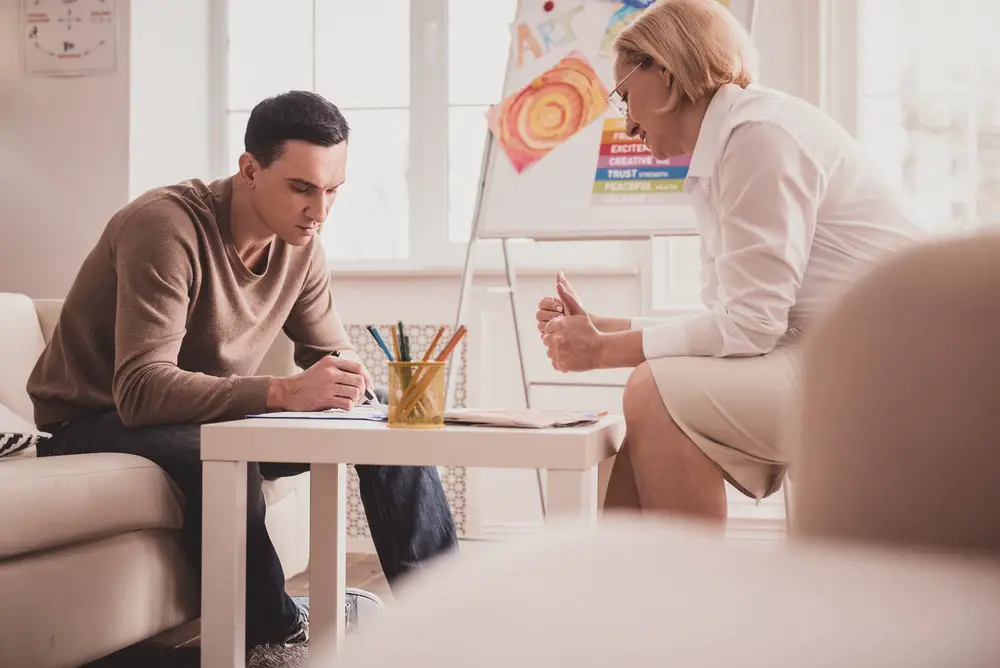
Concept of Art Therapy
Art therapy is a powerful healing tool that allows you to express your emotions and cope with grief through the creative process. By engaging in various forms of visual arts, you’ll find a safe and meaningful way to convey feelings that might be difficult to communicate verbally.
Art therapy’s core lies in using the imagination to transform emotional pain into tangible creations. You’ll find that as you express your grief through art, memories, and emotions become more accessible to bear, and stress begins to lift. It’s an opportunity to embark on a mission of self-discovery and growth, even in the face of loss.
Various techniques are employed in art therapy, including drawing, painting, sculpture, and photography. Each of these methods offers a unique way of tapping into your emotions and finding relief through the language of art. You’ll see that working with different modes of expression will allow you to explore new perspectives and avenues for healing.
The power of art therapy comes not only from the creative process itself but also from the metaphors infused within your art. This therapeutic approach is rooted in psychology, bridging the gap between conscious and subconscious minds. Through your creations, you’ll uncover subconscious thoughts and feelings, ultimately providing deeper insight into your experience of grief.
Art therapy can be practiced individually or in a group setting, guided by licensed therapists who specialize in expressive art therapy. These professionals deeply understand the connection between healing, emotions, and art creation. They’ll guide and support you, helping you navigate your grief journey using various art therapy techniques.
Remember, art therapy is an inclusive and accessible form of mental health care, suitable for all ages and skill levels. You don’t need any previous artistic experience to benefit from it. The primary goal is to offer an outlet for emotional expression, not to create masterpieces.
By incorporating art therapy into your grief management strategies, you’ll be able to reap the benefits of this creative, transformative tool and find solace during challenging times.
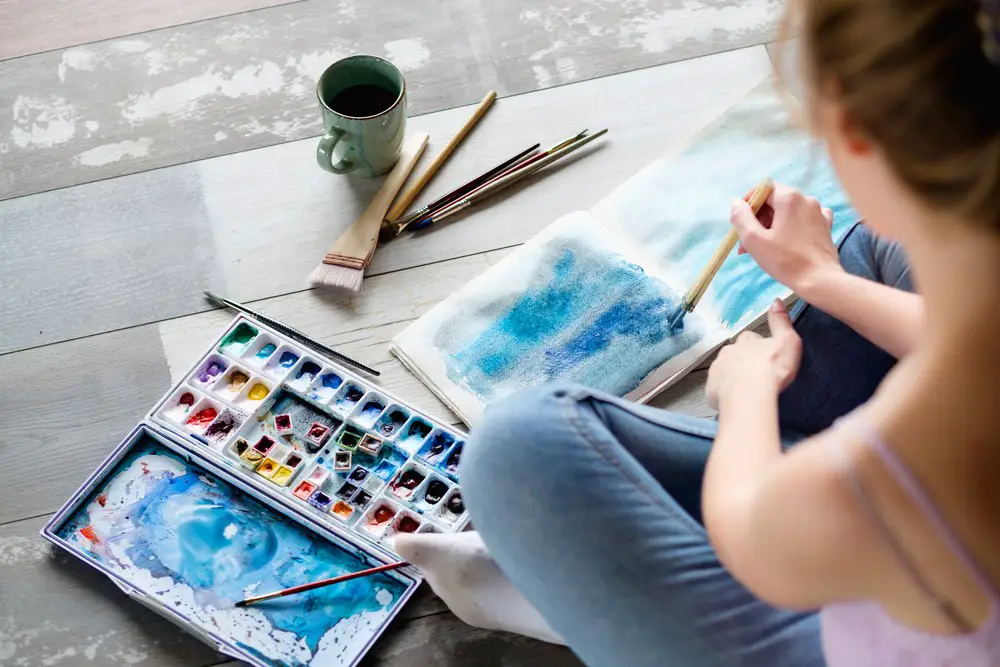
Role of Therapists in Art Therapy
Art therapy is a powerful tool to help grieving individuals because it allows them to express their emotions in a way that words often cannot. In this section, we’ll discuss the role of therapists in art therapy sessions and how they can help you navigate the complexities of your grief.
Therapists, specifically art therapists, play a critical role in the success of art therapy sessions. They possess specialized training in counseling and art, enabling them to facilitate sessions that effectively address your emotional and mental health needs. Art therapists are skilled at using the creative process to help you explore painful emotions and find the strength to cope with your loss.
During an art therapy session, the therapist takes on several important responsibilities. They use their grief counseling and psychotherapy knowledge to create a safe and supportive environment for you. This might include guiding you through activities like painting, drawing, or sculpture, which can help you express your grief non-threateningly. While talk therapy may not always resonate with everyone, art therapy allows you to communicate your feelings without articulating them.
In addition to providing guidance and support in your creative expressions, art therapists help you make connections between your art and your emotions. They may ask questions or engage in conversations about your artwork, encouraging you to explore and reflect on your feelings. This process can help you build a trusting relationship with your therapist, essential for effective grief counseling.
You might find your artwork sometimes leads to intense emotions or memories. An art therapist draws on their background in counseling to help you cope during these moments, offering strategies and insights that can help you navigate your grief. As a professional in their field, they have experience working with bereaved clients and understand the challenges of coping with a significant loss.
To summarize, art therapists in grief counseling are specially trained professionals who combine their expertise in art and psychotherapy to help you process your loss through creative expression. They offer a compassionate and non-judgmental environment in which you can effectively express your emotions as you navigate the complexities of your grief journey.
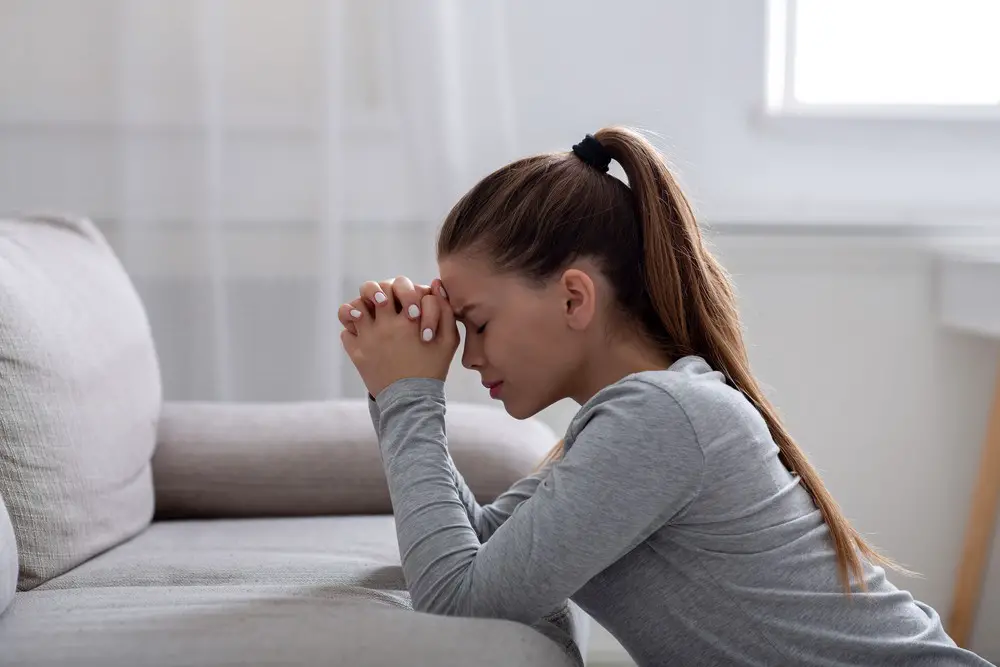
Different Art Techniques for Grief Therapy
Art therapy can be a powerful tool in processing grief and finding healing. This section will explore various art techniques to help you cope with your loss and express your emotions creatively and cathartically.
Painting Techniques
Whether you use a loaded brush or a simple palette, painting can express your emotions without words. Experiment with colors, textures, and strokes to depict your feelings. Painting can provide a meditative experience as you work through your grief. Through this process, you may find peace and a sense of accomplishment.
Key Takeaway: Painting allows you to channel your emotions through colors and textures, providing a therapeutic outlet for your grief.
Writing Techniques
Writing as an art form can be quite healing when dealing with loss. Journaling, poetry, or writing letters to your loved one can provide comfort and solace during difficult times. The written word offers a space to process emotions, reflect on memories, and find clarity in your feelings.
Key Takeaway: The process of writing can help you explore and express your emotions during your grieving journey.
Photography Techniques
Photography can capture memories and cathartically pause time. Creating photo collages or exploring new angles and lighting can help you revisit cherished moments while developing a new perspective on your grief. Harnessing this art form as a tool for healing can foster personal growth and acceptance.
Key Takeaway: Photography can help you celebrate memories and find a new appreciation for life’s fleeting moments.
Sculpture Techniques
Sculpture and pottery allow you to mold and shape your feelings into tangible forms physically. This tactile experience can be therapeutic, allowing you to channel your emotions into your artwork. As you create, allow yourself to explore the material interaction in-depth and see where it leads.
Key Takeaway: The hands-on nature of sculpture and pottery offers a unique therapeutic approach to expressing and processing grief.
Other Art Forms
There are many other expressive art modalities to consider, such as drawing, tattoo art, quilting, and creating mandalas. Experimenting with different art forms allows you to explore your emotions and ultimately helps you find the most valuable method for your healing process.
Key Takeaway: Keep an open mind and try different art forms to find the most meaningful and healing method for you.
Collages and Scrapbooks
Collages and scrapbooks can help you organize and preserve memories while forming a visual representation of your journey. This creative outlet allows you to narrate your story, combining elements of your past and present and exploring the significance of your loss.
Key Takeaway: Collages and scrapbooking can help preserve memories and creatively organize your thoughts and emotions visually.
Role of Music and Dance
Music and dance therapy can provide an emotional release while connecting you to the rhythm and flow of life. Creating or listening to songs, dancing, and participating in group performances can help you channel your emotions energetically and find healing through movement.
Key Takeaway: Music and dance offer a dynamic and lively outlet for processing grief and rediscovering joy.
Video and Digital Art
Video and digital art can help you share your stories, experiences, and emotions through motion and technology. Experimenting with this medium allows you to express your grief in new and innovative ways and can help you engage with others in your healing journey.
Key Takeaway: Embrace the digital age and explore the expressive potential of video and digital art as a channel for your grief.

Benefits of Art Therapy for Grief
Engaging in art therapy during grief can offer numerous benefits to help you heal and navigate the complex emotions accompanying loss.
- Healing and processing: Art therapy allows you to express your feelings through creative activities, fostering a safe space for exploration and understanding. As you immerse yourself in the creative process, you give your mind a break from the mental stress of grieving and allow it to process the pain in a new, nurturing way.
- Stress reduction and emotional release: Creating art can be a healthy outlet to relieve stress and let go of bottled-up emotions. As you delve into your art, you might feel lighter and more capable of handling your grief.
- Building coping skills: Art therapy can help you develop valuable coping skills as you navigate the grieving process. By exploring various artistic mediums, you’ll uncover new ways to express and process your emotions, ultimately strengthening your resilience and adaptability.
Here’s a brief list of some creative activities you can try:
- Painting or drawing
- Sculpture or pottery
- Writing or journaling
- Photography or scrapbooking
- Mindfulness and acceptance: Practicing mindfulness through art therapy helps bring your focus to the present moment. By concentrating on the act of creation, you can develop a greater sense of acceptance and awareness of your emotions, allowing you to process your grief with greater clarity and understanding.
- Finding solace and comfort: Engaging in creative activities can provide a sense of solace during difficult times. You may find comfort in your artistic expression, discovering a haven where you can freely explore your emotions.
- Boosting well-being: Art therapy benefits your emotional health and contributes to your overall well-being. Creative outlets can help improve self-esteem, increase self-awareness, and foster personal growth.
Remember that there is no right or wrong way to engage in art therapy; it’s about finding the creative activity that resonates with you and allows you to express your grief in a healing and supportive way.
Art Therapy for Different Age Groups
Art therapy can be a helpful tool in processing grief for different age groups. It allows individuals to engage in the creative process, providing a means for emotional release, self-expression, and understanding of personal experiences. This section will explore how art therapy benefits children and adults.
Art Therapy for Children
Children, especially those still developing their language skills, can struggle to express their emotions. Art therapy provides a nonverbal and engaging approach to helping children process grief. Some effective art therapy techniques for children may include:
- Drawing or painting: Encourages children to express their feelings visually and makes sharing easier.
- Sculpture or pottery: Hands-on activities like molding clay or making small sculptures give children a tangible outlet to work through grief.
- Collages or mixed media: This method can help children combine various materials to uniquely represent their emotions.
Children learn to cope with their emotions and work through their grief by participating in the creative process. They also develop a greater understanding of their own experiences and feelings.
Art Therapy for Adults
Art therapy can also be an effective way to help adults process their grief. While adults may have better-developed language skills, many still struggle to discuss their emotions or experiences. For adults, some practical art therapy techniques might include:
- Journaling or writing: Writing can help adults process their emotions through words, adding coherency and clarity to their experiences.
- Photography or scrapbooking: Capturing moments and memories through photographs can offer a deeper understanding and connection to one’s grief journey.
- Integrating art therapy into counseling: Professionals can use creative activities alongside traditional therapy techniques to provide additional emotional support.
The creative process in art therapy allows adults to explore and process their emotions in a safe, non-judgmental, and healing environment. This can lead to a better understanding of their grief, personal growth, and a smoother path toward healing.
Remember, art therapy for grief can have different approaches and benefits for children and adults. Experiment with various techniques to see which methods are most helpful for your unique needs and experience.
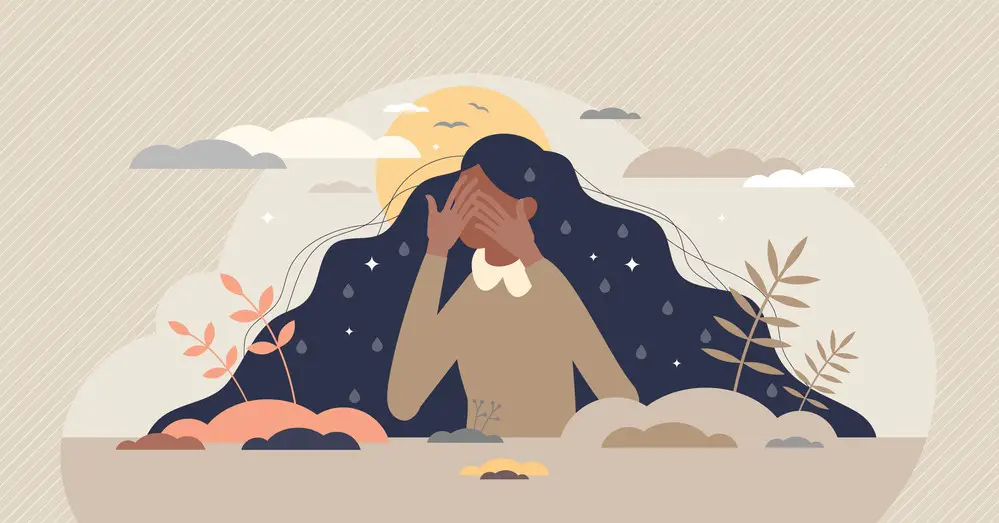
Art Therapy in Various Stages of Grief
When you face a significant loss, grief may evoke overwhelming emotions. Art therapy offers a creative and expressive way to navigate these emotions, helping you cope with various stages of grief. In this section, we’ll discuss how art therapy can help you during different stages of grief, such as pain, anger, confusion, and acceptance.
Dealing with Pain and Loss
In the initial stages of grief, you may experience pain and sadness as you face the reality of your loss. Art therapy can help bring your emotions to the surface through painting, drawing, or sculpting. By expressing your emotions through art, you can release some of the pain that you may not be able to articulate with words, facilitating the healing process.
Expressing Anger
Anger is a natural emotion that might arise during grief. You may feel like you need an outlet to let it all out. Art allows you to channel that energy through different mediums like painting, drawing, or photographing. These mediums give your anger a space to be without needing an explanation or justification.
Coping with Confusion
Grieving might bring a sense of confusion as you attempt to make sense of your loss. Art therapy allows you to process complex emotions and organize your thoughts via visual means. For example, creating a collage or mixed media piece can bring order to the chaos that grief imposes on your life.
Finding Acceptance
One essential aspect of healing from grief is reaching a level of acceptance. It’s when you begin to see a future without the person you lost and find a way to live with their memory. Art therapy can support this by providing a way to record, celebrate, and remember your loved one, ultimately helping you find peace.
Using art therapy throughout your grieving journey can be a comforting and transformative means of processing your emotions. Remember, each person’s approach to art therapy will be as unique as their grief experience, so don’t be afraid to explore different methods and techniques. Give yourself permission to feel and express through art, taking one step at a time towards healing.
How to Incorporate Art Therapy into Daily Life
Art therapy can be an effective way for you to cope with grief and express your feelings. Here are a few tips on how to incorporate it into your daily life:
1. Start with simple creative activities: If you’re new to art therapy, start with activities that are easy and enjoyable, such as coloring pages, doodling, or working with clay. These exercises can help you begin to explore your thoughts and emotions while staying focused on the present moment.
2. Set aside time for creativity: Treat your art therapy sessions like an essential part of your day – just like you would for exercise or meditation. Schedule a regular time slot for creative activities and try to stick to it.
3. Practice mindfulness during your sessions: While engaging in art therapy, focus on the process rather than the outcome. As you create, pay attention to your thoughts, feelings, and physical sensations – this mindfulness can help you better understand and process your grief.
4. Use art to build a legacy: Creating art can help you honor the memory of your loved ones and preserve their legacy. You could make a memory box, create a photo collage, or paint a picture that represents your memories of them.
5. Get support from others: Join an art therapy group or share your artistic creations with friends or family members. This can help create a sense of connection and community, making your grieving process less isolating.
Remember, art therapy is a personal journey, and you should feel free to explore different creative activities that resonate with you. Try different mediums, materials, and techniques to bring variety to your sessions and motivate yourself.
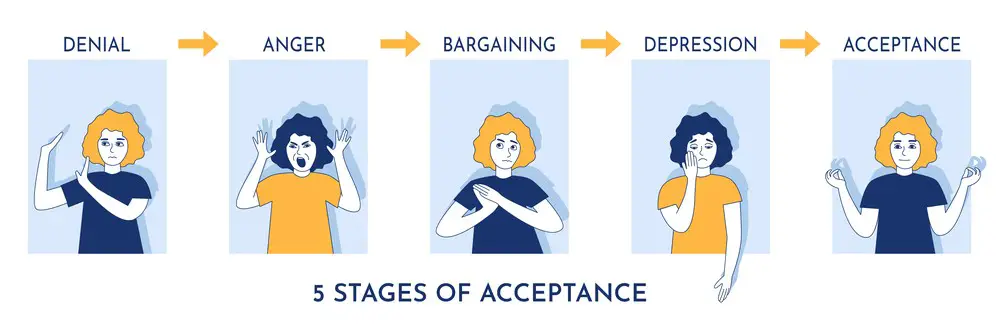
Role of Art Therapy in Trauma and Significant Losses
Art therapy can play a vital role in helping individuals cope with trauma and significant losses. It offers a safe and creative space for individuals to express their emotions and make sense of their experiences. Whether you’re dealing with traumatic experiences or grieving a significant loss, art therapy can provide a constructive outlet for your emotions.
One of the main benefits of art therapy for trauma is that it allows you to express feelings that may be difficult to verbalize. Expressive art therapy, such as painting, drawing, or sculpting, enables you to tap into your emotions and communicate them creatively. This form of therapy can be particularly beneficial for those who have experienced traumatic events, as it can assist in processing complex emotions and begin the reconstruction of shattered self-belief.
Another important aspect of art therapy is its ability to foster a sense of resilience and personal growth. As you engage in the creative process, you can gain new insights into your emotions and experiences, leading to a deeper understanding of your resilience. You’re taking an essential step towards healing and growth by actively working through your feelings.
Here are a few key takeaways to remember about the role of art therapy in trauma and significant losses:
- Art therapy provides a safe and creative outlet for expressing emotions and coping with trauma.
- Expressive art therapy helps individuals process complex emotions and aids in the reconstruction of self-belief.
- The creative process fosters resilience and personal growth, improving overall healing and well-being.
In conclusion, art therapy can be a powerful tool in dealing with trauma and significant losses. By engaging in expressive art, you provide an outlet for your emotions and work towards healing and personal growth.

Incorporating Art Therapy in Memory of a Loved One
Grieving the loss of a loved one is an immensely personal and challenging experience. Art therapy can offer you a healthy outlet for expressing your emotions and honoring the memories of your loved one. Here are a few ways to incorporate art therapy as a tribute to someone important in your life.
Create a visual journal: Pour your emotions and memories into a visual journal. This can be a mix of drawings, paintings, photographs, and written words. As you work on it, you’ll be reminded of special moments and cherished experiences with your loved one.
Craft a memorial collage: Collect pictures, letters, and other memorabilia related to your loved one and arrange them in a collage. You can include quotes, song lyrics, or poems that remind you of them. This tangible reminder can help you feel connected and preserve your legacy.
Design a memorial tattoo: Memorial tattoos are a beautiful way to keep your loved one close to you. Choose a symbol or image that resonates with their personality, interests, or shared memories. Consult a tattoo artist to ensure your design is meaningful and aesthetically pleasing.
Sculpt a memory: Working with clay or other sculpting materials can be a calming and therapeutic experience. Create a figurine or object representing your loved one, or sculpt a scene that symbolizes a cherished memory you shared with them.
Express through writing or poetry: Sometimes, words can be as powerful as visual art. Don’t be afraid to write letters, poems, or stories about your loved one. Writing can help you process your feelings, create a tribute, and celebrate the legacy you left behind.
Remember, there’s no right or wrong way to use art therapy to honor someone special. You know your loved one best, so trust your instincts and creativity. The process can be healing and help you embrace the beauty of your shared memories.
Frequently Asked Questions
How can art therapy benefit those dealing with grief?
Art therapy offers an alternative way to process and manage grief responses, especially for individuals who struggle with verbal expression. By using creativity, art can channel emotions, reduce stress, and help individuals understand their feelings. Creating art can provide a sense of accomplishment and purpose, which can be therapeutic for those dealing with loss.
Key takeaway: Art therapy can be an effective tool for expressing and understanding emotions experienced during grief.
What are some effective art activities for adults struggling with grief?
Here are a few art activities that can be helpful for adults going through grief:
- Writing and Journaling: Express your feelings and thoughts through written words.
- Photography and Scrapbooking: Capture memories or create visual representations of emotions.
- Drawing and Painting: Use colors and shapes as an outlet for emotions.
- Collage: Combine pictures, words, and textures representing your grief journey.
Key takeaway: Various art forms can express and process grief, helping individuals heal.
Can participating in grief painting activities help cope with loss?
Yes, grief painting activities can be a helpful way to cope with loss. Painting can serve as a healthy emotional outlet, allowing individuals to release and express their feelings. Additionally, selecting colors, shapes, and images can provide a sense of control and direction in a time when grief might make life feel chaotic.
Key takeaway: Grieving individuals may find solace and a sense of direction through participation in grief painting activities.
Are there any art therapy centers that specialize in grief?
Yes, art therapy centers specialize in grief counseling and support. These centers often employ trained art therapists who utilize various art techniques to help clients process and manage their grief. To find a specialized art therapy center in your area, consider searching locally or asking for referrals from healthcare providers or grief support groups.
Key takeaway: Art therapy centers specializing in grief counseling exist and may provide valuable support to those coping with loss.
How has art historically depicted and addressed grief?
Throughout history, art has been used as a medium to explore, illustrate, and process emotions related to grief. Renowned artists, such as Picasso and van Gogh, often dealt with grief in their personal lives and integrated those emotions into their work. Art has also been used to commemorate and memorialize the deceased, with examples including tombstones, memorials, and paintings of mourning scenes.
Key takeaway: Art has a long history of depicting and addressing grief, showcasing its potential as a powerful therapeutic tool.
What types of creative exercises can be used to process grief and heal?
Several creative exercises can help process grief, including:
- Drawing or painting emotions: Create a visual representation of your grief-associated feelings.
- Writing a letter: Pen a letter to a lost loved one, expressing your thoughts and emotions.
- Memory box: Design a box to hold cherished mementos and memories of the person you’re grieving.
- Expression through movement: Use dance, yoga, or other movement-based activities to connect with your emotions and release tension.
Key takeaway: Creative exercises allow for diverse methods of expressing and processing grief emotions, aiding in the healing process.
Jacob Maslow
After surviving the traumatizing events of 9/11, I took it upon myself to heal through helping others. I’m the primary caregiver of my children and understand from first-hand experience the lonely paths you have to walk as a partner and parent when leaving an unhealthy relationship.
We’re all echoing in a dark space that doesn’t have to be this empty, and that’s been my mission since finding solace and recovery in therapy: To help comfort others who are still in shock and at the prime of their struggle.
I came across BetterHelp after searching for this type of community. I wanted to belong to a body of proactive therapists and supportive therapy veterans that allowed me to see other sides of the story.
It was unconventional, and that’s what attracted me most. During my most challenging times, when my ex-wife completely cut me off from my children, I found comfort and clarity through BetterHelp.
Instead of being chained to a strict therapist recommendation, I was in charge of who I felt understood my struggle most. That allowed me to find my true peace, as I was reunited with those who read behind my words and had first-hand experience with my trauma.
Recovery is a choice; with BetterHelp, that choice will be a few clicks away. You can join their couples-oriented platform, Regain.us, for those stuck with family estrangement and toxic relationship patterns.
- Breaking the Silence: Why Men’s Mental Health Matters More Than Ever - April 15, 2025
- How to Transform a Home’s Patio Space into a Relaxing Space - March 23, 2025
- 5 Strategies to Use a Cell Phone to Help Manage Your Stress - March 23, 2025
This site contains affiliate links to products. We will receive a commission for purchases made through these links.



